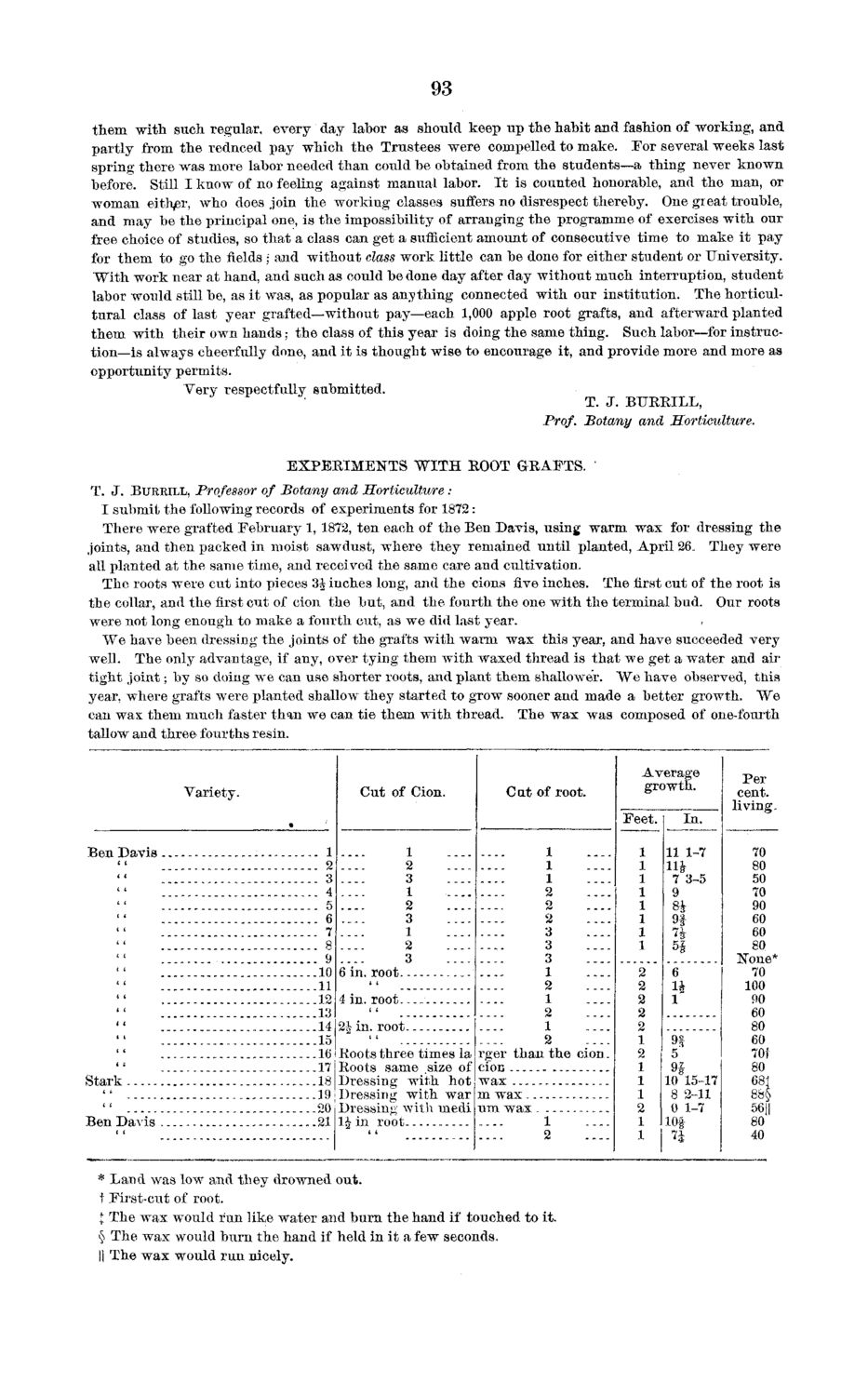| |
| |
Caption: Board of Trustees Minutes - 1873
This is a reduced-resolution page image for fast online browsing.

EXTRACTED TEXT FROM PAGE:
93 them with such regular, every day labor as should keep up the habit and fashion of working, and partly from the rednced pay which the Trustees were compelled to make. For several weeks last spring there was more labor needed than could be obtained from the students—a thing never known before. Still I know of no feeling against manual labor. I t is counted honorable, and the man, or woman either, who does join the working classes suffers no disrespect thereby. One great trouble, and may be the principal one, is the impossibility of arranging the programme of exercises with our free choice of studies, so that a class can get a sufficient amount of consecutive time to make it pay for them to go the fields • and without class work little can be done for either student or University. With work near at hand, and such as could be done day after day without much interruption, student labor would still be, as it was, as popular as anything connected with our institution. The horticultural class of last year grafted—without pay—each 1,000 apple root grafts, and afterward planted them with their own hands; the class of this year is doing the same thing. Such labor—for instruction—is always cheerfully done, and it is thought wise to encourage it, and provide more and more as opportunity permits. Very respectfully submitted. T. J. BUEEILL, Prof. Botany and Horticulture. EXPEEIMESTTS WITH EOOT GEAFTS. T. J. BURKILL, Professor of Botany and Horticulture : I submit the following records of experiments for 1872: There were grafted February 1, 1872, ten each of the Ben Davis, using warm wax for dressing the joints, and then packed in moist sawdust, where they remained until planted, April 26. They were all planted at the same time, and received the same care and cultivation. The roots were cut into pieces 3J inches long, and the cions five inches. The first cut of the root is the collar, and the first cut of cion the but, and the fourth the one with the terminal bud. Our roots were not long enough to make a fourth cut, as we did last year. We have been dressing the joints of the grafts with warm wax this year, and have succeeded very well. The only advantage, if any, over tying them with waxed thread is that we get a water and airtight joint; by so doing we can use shorter roots, and plant them shallower. We have observed, this year, where grafts were planted shallow they started to grow sooner and made a better growth. We can wax them much faster than we can tie them with thread. The wax was composed of one-fourth tallow and three fourths resin. Average growth. Per cent, living. Variety Cut of Cion. Cut of root. \i :::::.::::: < « i In. 11 1-7 7 3-5 9 8* 9f 70 80 50 70 90 60 60 80 70 100 90 60 80 60 701 80 68} 88§ 56|| 80 40 i 1 1 11 << >< < i i 2 3 4 5 6 7 8 9 10 11 12 ....13 14 15 16 ..-17 18 ...19 20 21 1 1 1 2 2 2 3 3 3 .... 1 6 in. root 2 1 4 in. r o o t . 2 1 2 E o o t s t h r e e t i m e s la r g e r t h a n t h e c i o n . E o o t s s a m e .size of cfon Dressing with hot wax Dressing w i t h war Dressing with medi 1 2 1 2 3 1 2 3 1 2 3 n 2 2 2 2 2 1 2 1 1 1 2 1 1 6 1* 1 n 5 10 15-17 8 2-11 0 1-7 10f n * Land was low and they drowned out. f First-cut of root. t The wax would run like water and burn the hand if touched to it. § The wax would burn the hand if held in it a few seconds, || The wax would run nicely.
| |